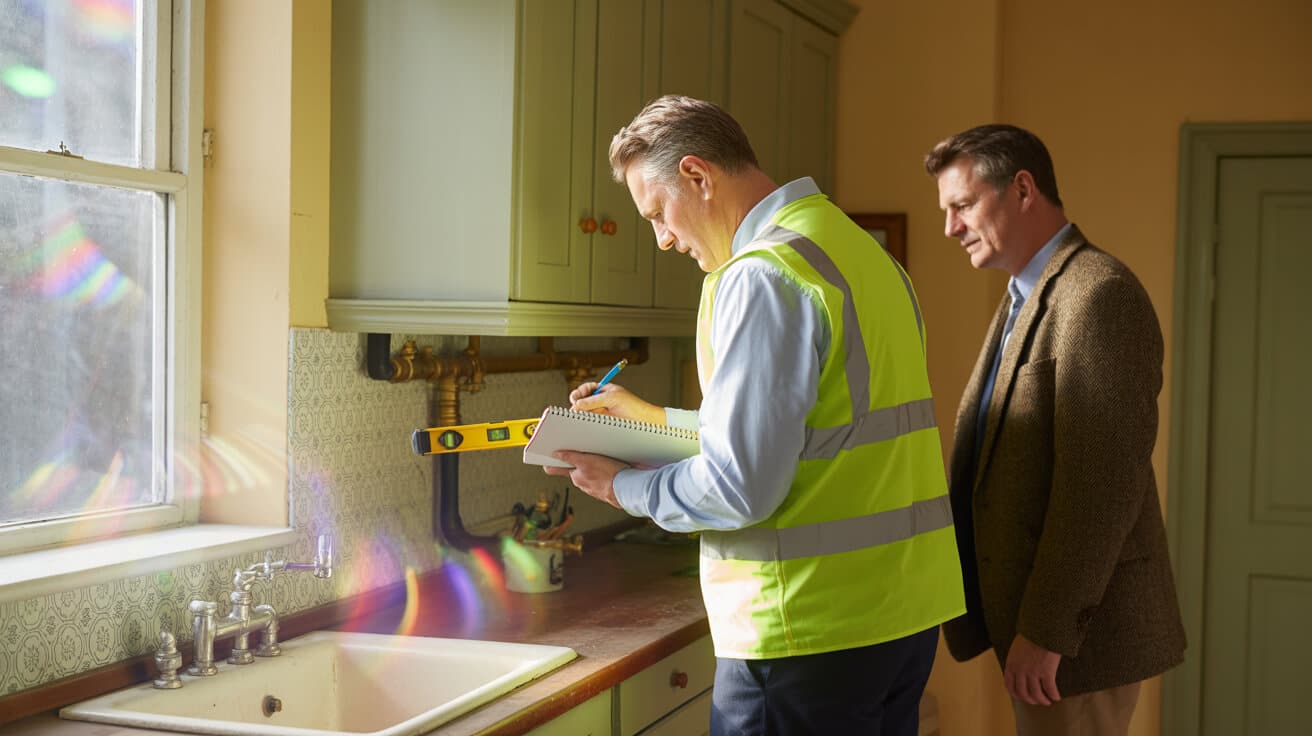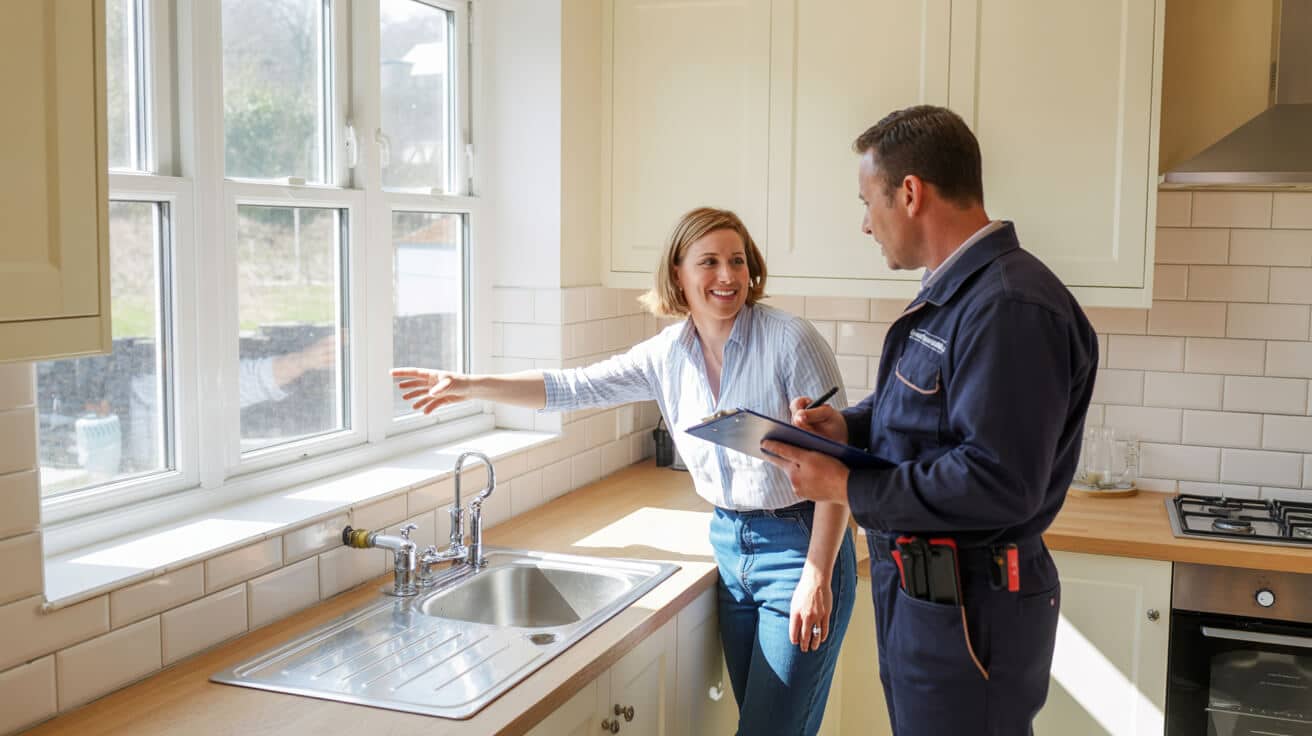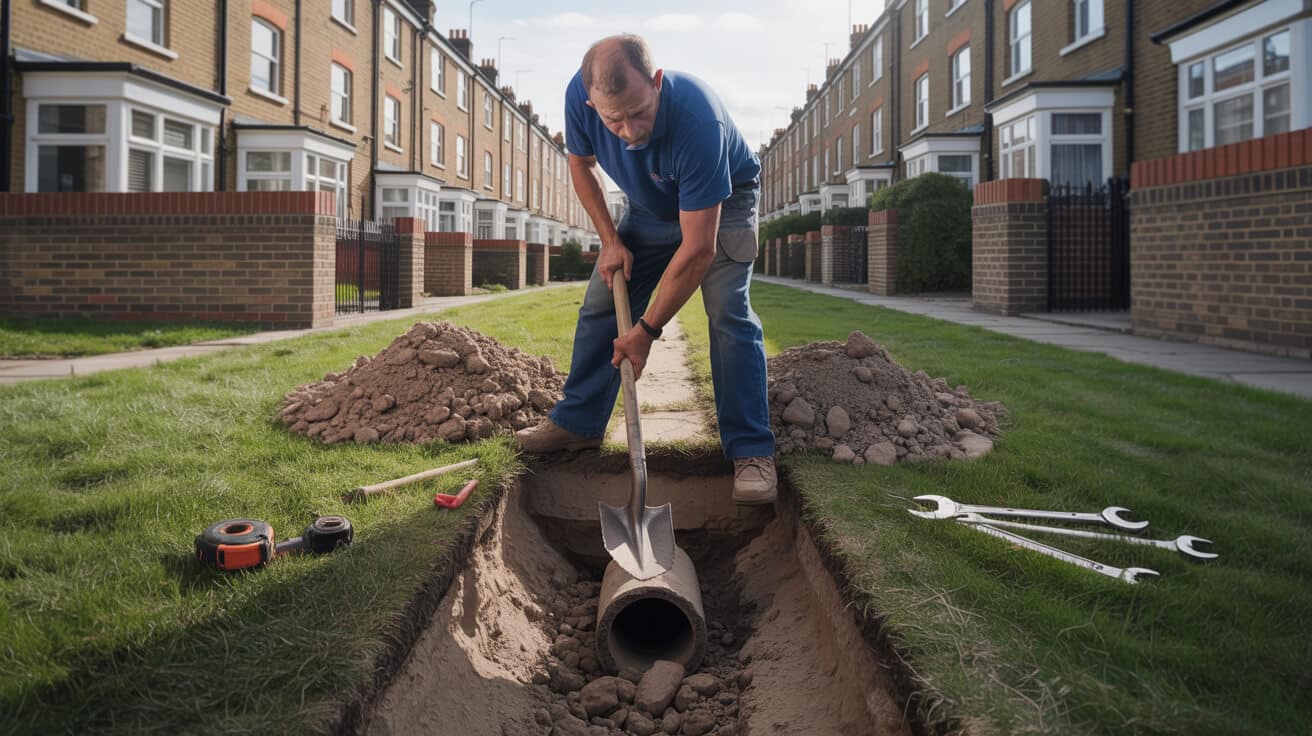 Is Underfloor Heating Right for Your Home
Is Underfloor Heating Right for Your Home

Is Underfloor Heating Right for Your Home, or Are You Buying Into the Hype?
If you’ve ever caught yourself daydreaming about stepping onto a perfectly warm floor in the dead of winter—no radiators, no draughts, just silent comfort—underfloor heating is probably on your radar. It’s being promoted from new-build brochures to property forums as the smart, modern way to heat a home, save energy, and boost property value. But behind the glossy marketing, the critical question for UK homeowners, landlords, managing agents, and commercial owners remains: who actually gains real comfort, and who ends up with an expensive headache?
The most comfortable heating is the kind you never have to think about—until it doesn’t work.
Underfloor heating (UFH) isn’t a gimmick. It’s a technology that’s matured, now appearing in everything from designer bathrooms to sprawling apartment complexes. Thanks to incentives like the Boiler Upgrade Scheme (BUS), higher EPC requirements, and the drive for “greener” heating, more people are considering UFH than ever before. Yet for every success storey, there’s a disappointed owner wrestling with cold patches, slow heat-up times, or renovation chaos because of poor advice or missed details. Here’s the reality: underfloor heating delivers comfort only when design, property structure, insulation, and compliance align perfectly—otherwise, it’s just a fashionable upgrade with a premium price tag.
Can Underfloor Heating Suit Any Property, or Do Hidden Barriers Trap Owners?

UFH is often described as “flexible for any project,” but that claim crumbles fast once you look at the nitty-gritty of British property stock. On paper, there’s a UFH solution for every floor: concrete slabs, timber joists, tiled extensions, even retrofitted upstairs bedrooms. In real life? Floors, insulation, and legal considerations set the boundaries.
Modern underfloor systems can be tailored to most floor types, but insulation and room zoning must come first to optimise performance and prevent wasted energy. *(hvpmag.co.uk)*
Will Your Floors, Structure, and Lease Actually Permit UFH?
- Solid floors: (screed or concrete) are the easiest for pipe-based or electric UFH—the build-up is planned into the architecture.
- Suspended timber floors: (common in period homes, or upper stories) may need strengthening, extra insulation, and careful pipe or mat routing.
- Overlay systems: sound quick (low-profile boards above existing floors), but add 15–25mm to height—which means doors may stick, stairs need altering, and fitted furniture can be thrown out of level.
- Period properties, conservation zones, and leaseholds: Legal hurdles abound. You may need explicit planning or freeholder permission—and in listed buildings, even small changes can be blocked.
- Flats above other owners: Any intrusion into subfloors could breach lease agreements or regulations, risking legal challenge.
Before you touch an online calculator or request a quote:
- Have a professional check your subfloor build and insulation depth—can it take the extra layers?
- Audit every room individually: some areas may work, others won’t. Hybrid systems (UFH + radiators) aren’t a fail—they’re often the only practical solution in older homes.
- Map the journey for hot/cold pipes, electrical elements, or manifolds—don’t risk running into a neighbour’s joists or structural steel.
The UFH fits anywhere myth dies a quick death once actual floors, legal status, and insulation are mapped room by room.
Legal Compliance, Planning, and Avoiding Shoddy Retrofits
- Building Control: In many UK councils, even electric UFH in bathrooms or kitchens may trigger notification requirements. EPC and grant eligibility can be lost if not installed or documented correctly.
- Conservation Areas or Listings: Workarounds may exist (e.g. dry-fit overlay panels), but cutting corners here invites compliance and future sales nightmares.
- Access and Zoning: Think about how tradespeople will route pipes, access manifolds, and integrate with existing plumbing and electrics. Overcomplicated layouts invite future repair headaches.
Reality check: Get the property specifics ironed out now. A site visit costs little compared to a ripped-up floor or withheld insurance payout later.
Is Underfloor Heating Actually Comfortable, or Just a Stylish Gimmick?

You don’t want just a “trendy” upgrade. You want warmth, control, and something owners (or tenants) will love five winters in—not just for Instagram.
Underfloor heating’s even warmth and reduced air movement can help maintain stable humidity, supporting a healthy environment. *(warmup.ie)*
Radiant Comfort: What UFH Really Delivers
- Even heat from the ground up: UFH works via radiant heat. No cold spots, draughts, or overworked radiators—just a gentle, even warmth across the space.
- Cleaner air, less aggravation: Radiators circulate dust and allergens, UFH keeps things settled—especially valuable if you have allergies, children, or elderly residents.
- Invisible design freedom: With no wall-mounted radiators, you liberate floor and wall space—ideal for open planning, minimalist layouts, or awkward rooms.
The Trade-offs Nobody Tells You Upfront
- Slow response: UFH is a marathon runner, not a sprinter. It takes longer to heat up and cool down—programmable schedules and smart controls are essential. “Quick boost of heat” isn’t on the menu.
- Tech learning curve: Zoning, smart thermostats, and geofencing add flexibility, but require users to get familiar with apps and schedules.
- Limited use cases: Some rooms simply aren’t worth the cost of UFH—spare bedrooms, occasional offices, or rooms with stacked furniture may do better with a quality radiator.
Key comfort question: Will you (or your tenants) use the schedules, app logic, and zoning? Are you ready to invest time upfront for daily comfort later?
Are Running Costs and Energy Savings Genuinely Lower with Underfloor Heating?

The efficiency sales pitch is everywhere: lower bills, “future-proof” heating, and better EPC scores. But does the reality match the promise, or is payback wishful thinking?
Current UK Building Regulations cap flow temperatures at 55°C—a level tailored for UFH and necessary for most efficiency grants or EPC upgrades. *(Polypipeufh.com)*
Two Things Matter: Insulation and Control
- Insulation beneath the UFH system: is *everything*. Short-cut here, and your heat vanishes into the ground or the flat below, not into your room.
- Zoning and schedules: let you heat only the rooms you actually use—lowering waste and bills. “Heat every room all the time” destroys savings.
- Low flow temperature: UFH works best at 40–55°C, pairing perfectly with Condensing Boilers or heat pumps. Old, inefficient boilers may need upgrading to get the real benefits.
Ongoing cost influencers:
- Insulation quality and continuity per Part L specs
- Smart controls and app programming—do you use them, or leave them on “default”?
- Regular servicing: annual flush and inhibitor top-up, smart device updates, zone valve checks
- Grant paperwork: missing documentation = missed money back
Payback timeframes? Four to eight years for a well-designed, well-insulated system—in ideal circumstances. Older homes, spotty insulation, or absent schedules? The maths can flip, leaving you with higher outgoings and disappointment.
Strong insulation and schedule discipline are your only real guarantees of lower bills, not the badge on the manifold.
How Disruptive is Installation, and What’s the Real Aftercare Journey?

It’s no good dreaming of comfort if week one is pure chaos and aftercare is a guessing game. UFH can add value—or trigger headaches—depending on how you manage disruption and future care.
Overlay retrofit panels reduce mess, but add cost and time—plus the risk of raised floor levels affecting doors, skirtings, and furniture. *(ava-ltd.com)*
Installation: What Really Happens to Your Property
- Newbuild?: Easy—UFH gets built into the floor plan, insulation is specified, and trades all coordinate.
- Retrofit?: Expect existing floors to be lifted; insulation and panels added; thresholds, skirtings, and doors all potentially needing attention. Overlays are fastest, but they aren’t no-impact—they raise floor heights, and can stress old structures.
- Noise, dust, and logistics: Expect noise, debris, skip loads, wet trades, and extra days per room compared with a radiator swap-over.
- Complex zones mean complex pipework: Every additional control zone (e.g., to split living/kitchen/bedrooms) requires its own manifold connections and controls—plan for visible access panels and extra setup time.
Aftercare: No Such Thing as “Fit and Forget”
UFH’s daily experience is low-maintenance—a chemical flush, inhibitor top-up, and stat/valve check as part of annual servicing. However, digital controls need occasional updates, and for new owners or letting cycles, you must keep logbooks, zone maps, and installation records ready.
Always demand hands-on demo and written handover packs—shortcuts cost dearly in future warranty and grant claims.
Modern comfort comes from being prepared—lessons learned now can save years of future annoyance, rental friction, or insurance drama.
Does UFH Add Real Value or Is It a “Tick-Box” for Paperwork Only?

The right UFH system, commissioned and documented properly, can absolutely lift a property’s value, saleability, and compliance status. But instal gone wrong, or paperwork missing, can drag down value and create future legal risk.
Legal instals demand rigorous documentation—without it, property value, resale, insurance validity, and even grant eligibility are at risk. *(polypipeufh.com)*
What Adds Value, What Kills It
- Documentation and certification: WRAS and G3 compliance, WaterSafe installer status, and TrustMark are now must-haves, not nice-to-haves. Without these, property lawyers and insurance firms can—and do—void cover or block sales.
- Benchmarking and Building Control: Installers should provide full logbooks, performance certificates, and commissioning records at handoff. These are not just for show—they’re legal requirements.
- Grant eligibility and EPC scores: Failure to meet documentation requirements can lock you out of government grants or low-interest finance—don’t expect “DIY” paperwork or retroactive sign-off to be accepted.
Old Myths and Current Truths
- Myth: UFH always boosts property value.
- Reality: Only compliant and documented instals add value—botched fits can kill sale price.
- Myth: Any plumber can fit UFH.
- Reality: Only WRAS, G3, WaterSafe, and TrustMark registered firms pass the compliance and insurance tests.
If you’re considering a future sale, remortgage, or grant—insist on all documentation, logbooks, and commissioning files from day one. No paper trail = problems.
How Do You Decide If UFH or Traditional Heating Is Better for Your Home?

When decision time comes, budget is rarely the only metric. Floor structure, daily patterns, insulation levels, and risk tolerance all matter. UFH isn’t right for every home—or every room.
7-Point UFH Suitability Self-Assessment
Ask yourself:
- Floor Structure: Is there sufficient depth and stability for insulation and pipe/mat build-up?
- Room Use: Do you want even heat (living rooms, bathrooms) or only occasional warmth (spares, box rooms)?
- Insulation: Are target rooms insulated to Part L spec or will you need to invest first?
- Height Constraints: Will added thickness interfere with doors, stairs, or built-in furniture?
- Control Appetite: Are you or your tenants comfortable with app/smartstat logic, or is “one dial” the preference?
- Heat Source: Will your current boiler support low temp flows, or will you need a heat pump or combi upgrade?
- Installer Credentials: Is your installer supplying WRAS, G3, WaterSafe, and TrustMark paperwork on handoff?
Fast online quotes don’t protect you from expensive mismatches. Only a site visit and proper technical review make the call clear—don’t skip these steps.
What If UFH Isn’t Practical?
- Don’t force it. Hybrid solutions—rads + smart controls + insulation upgrades—can outperform UFH in some period properties or complicated layouts.
- For some properties, boosting insulation, fitting smart TRVs, and rebalancing your current system delivers most of the “modern comfort” for less upheaval.
What Should You Demand from Your Installer, and How Do You Spot Red Flags?

A professional UFH instal is a compliance and documentation journey as much as it is a technical job. Don’t cut corners—insist on these essentials at every stage.
Non-Negotiables to Protect Your Investment
- Room-by-room calculations for insulation, pipe/mat density, and control zones
- Pre and post-installation photo evidence for insurance/building control
- WRAS, G3, WaterSafe, and TrustMark credentials on display (not just a sticker on the van)
- A written breakdown quote—not a “verbal deal” or “all in, trust me” arrangement
- Handover pack with instructions, app/wall control training, and all logbooks and warranty docs included
- Grant and EPC signoff guidance built into your service, not an afterthought
Serious warning signs:
- No specification tailored for your floors or insulation—watch for “one-size-fits-all” approaches
- No paperwork, logbook, or commissioning files at the end of the job
- No insurance, unclear credentials, or suspiciously low prices
The sign of a proper UFH job is peace of mind, not just a warm floor—insist on transparency, credentials, and aftercare.
Why Plumbers 4U Is the Safer, Smarter Way to Go Underfloor
If you’re ready to stop guessing and get heating that truly fits your building, working style, or letting needs, Plumbers 4U is your best first step. Every UFH project starts with a full property survey—not just a quote over the phone.
What Our Approach Looks Like:
- No guesswork: We dispatch certified engineers to audit your floor structure, insulation, compliance needs, and comfort habits. One room or multi-zone, we tailor the proposal.
- Only certified instals: Our teams are WRAS-approved, G3 qualified, WaterSafe and TrustMark registered—you get the right documentation for EPC/grants, not excuses.
- Clear pricing, zero-pressure: You get a breakdown, not a “special deal”. Any product or part is specified up front—with reference numbers, so you know what’s going in.
- Onboarding and aftercare: We demo controls in-person, hand over all paperwork (logbooks, warranties, grant docs), and set reminders for maintenance/service.
- Full clean-up: Every project ends with working systems, clean floors, and before/after photos logged.
The difference between cutting-edge heating and costly regret comes down to planning and proof—let’s deliver comfort that lasts.
Don’t risk comfort, compliance, or long-term value. Book a tailored underfloor heating survey or quote with Plumbers 4U today—where comfort, value, and reliability meet, for today’s market and tomorrow’s standards.
Frequently Asked Questions
Who Actually Gets the Full Benefit from Underfloor Heating in Real UK Homes?
Underfloor heating isn’t just about luxury—its payoff depends on your property’s bones, your lifestyle, and the details that most people overlook. Solid floors in new builds or modern extensions, spaces with proper insulation, and homes where open layouts are the norm? These are prime ground for underfloor systems that deliver both comfort and reduced bills. If you’re in an older house or have quirky timber floors and uneven substrates, you’ll need tailored tech (think ultra-thin overlays, specialist insulation, and calculated floor build-ups) to avoid energy drain and compliance headaches.
Leaseholds or flats demand strict paperwork trails: landlord signoff, building control, and digital evidence for later resale or insurance. Skip those, and you’ll feel the sting—either in legal surprise or lost comfort.
Real readiness comes from what you can prove: structure, insulation, and the paperwork that future-proofs your investment.
Expert Survey: How Suitability Is Truly Decided
- Floor structure check: Concrete means less hassle; timber requires strength analysis and extra insulation.
- Insulation baseline: Gaps mean heat (and money) literally disappear through the floor.
- Room layout: Busy kitchens, cluttered small rooms, or dense built-ins can disrupt heat flow and undercut benefits.
- Legal signoff: Leasehold, listed, or multi-use properties—get approvals in writing before money leaves your account.
- Regulatory credential proof: WRAS, WaterSafe, G3, TrustMark; if the installer can’t show them, walk away.
- EPC reality: Only a well-insulated property reaps efficiency, grants, and value rise.
Book a professional suitability report before you buy—Plumbers 4U runs deep-dive diagnostics, covering every corner and code, setting the stage for comfort and compliance that lasts.
Table: Where Underfloor Heating Fits Best
| Scenario | System Fit | Essential Checks |
|---|---|---|
| New Build | Wet or Electric | Manifold, insulation depth |
| 1930s Terrace | Overlay/wet on timber | Height/build-up, consent |
| Flat/Lease | Electric mat | Legal, acoustic/thermal regs |
| Heritage Property | Bespoke ultra-thin | Subfloor, planning, consent |
| Commercial/Kitchen | Robust insulated mat | Floor loading, compliance |
Your property’s “yes” is proved by documentation and a data-driven survey, not a sales pitch. Plumbers 4U puts every option in writing—the right fit, not just a quick instal.
Why Are the Pros and Cons of Underfloor Heating and Radiators So Easy to Misjudge?
Underfloor heating wins fans with promises of invisible comfort, but trade-offs crop up if matched to the wrong space or run without strategy. UFH shines when you want steady, background warmth—think busy open-plan family rooms, kitchens, or wet zones that get heavy use. But if you crave lightning-fast heat or only want warmth at set moments, radiators might still be the smarter bet.
Most people stumble on upfront cost (UFH often doubles the instal price per room), on heat-up times (UFH rewards planners, not spontaneous “heat now” types), or on upkeep: wet systems need periodic manifold checks and chemical balancing, while rads thrive on annual bleeding and rebalancing.
Comfort is a moving target—engineer it for your space and routine, not just for the next trend.
Where Each System Leads—And Where It Lags
- UFH delivers: Consistency, silent operation, fewer cold spots, wall space free for décor or open plan.
- Radiators excel: Fast warmth, easy upgrades, zoned usage in rooms that see less traffic.
- Maintenance diverges: UFH’s plumbing needs skilled eyes every year or two; rads, you can often DIY or get quick fixes.
- Health angle: UFH reduces airborne dust, helpful for allergy sufferers.
Smart controls (zoning, app tweaks, routine scheduling) make or break UFH’s value. Without them, cold spells or wasted energy appear at the first weather swing.
At-a-Glance: Heating Options vs Use Cases
| Feature | Underfloor Heating | Radiators |
|---|---|---|
| Heat-up speed | Gradual, set-ahead | Rapid, on-demand |
| Floor impact | Elevates 15–25mm (wet) | Minimal height change |
| Layout flexibility | Maximum—no visible units | Some wall/space lost |
| Cost vs. value | High instal, ROI in use | Low instal, flexible use |
| Maintenance | Manifold/service log | Bleed/balance as needed |
Always bring your property into the “pros vs cons” conversation. Plumbers 4U tailors every recommendation for your structure and routine—so heating is engineered, not just installed.
How Do Property Age, Subfloor, and Floor Finish Decisively Shape Underfloor Heating Performance?
No two floors deliver the same heating payoff—even with identical kit. New or recently modernised concrete slabs are a dream foundation, giving UFH an efficient heat path and maximum comfort. Timber subfloors, suspended joists, or wonky builds (think: Victorian or Edwardian homes) demand layer-by-layer analysis, specialist insulation, and overlays tested for weight and thermal drift.
The finish on top carries just as much weight. Tiles and stone send warmth directly up and out; engineered woods must be UFH-rated and monitored for collective thickness and moisture; carpets/laminates need their “tog value” calculated—over 2.5, and you’ll never feel the full warmth.
Heating efficiency is sketched in insulation and floor maps—comfort lives where old and new are made compatible.
What the Installer Checks (and Why It Matters)
- Age of building: Modern = better base insulation, evenness, easier compliance. Older = creative design, sometimes heritage approvals.
- Subfloor material: Concrete = easy win; timber = needs extra layers and often structural tweaks.
- Finish evaluation: Hard tiles = optimal; wood/carpet/vinyl = manufacturer’s specs, maximum thickness, tog limits.
A trustworthy installer never quotes without surveying your precise floor “stack” and measuring for legal door, step, and threshold heights.
Table: Best-Fit Analysis by Floor/Finish
| Floor / Finish | Wet UFH | Electric UFH | Extra Steps Needed |
|---|---|---|---|
| New concrete | Yes | Yes | Basic insulation layer |
| Timber joists | Yes* | Yes | Overlay & structure check |
| Stone/ceramic tiles | Yes | Yes | Approved adhesive/spacing |
| Engineered wood (<18mm) | Yes* | Yes | Confirm “UFH rated” only |
| Carpet/laminate (tog <2.5) | Yes** | Yes** | Underlay and tog confirm |
Indicates extra insulation or reinforcement necessary.
*UFH only if rated and tested—higher resistance erases efficiency.
Request a property-specific floor “pass/fail” from Plumbers 4U to prevent silent comfort loss at the very first instal.
Which UK Laws, Standards, and Incentives Dictate Underfloor Heating Compliance and Who Enforces Them?
A safe, insurable, and grant-eligible underfloor system is always stamped by strict Building Regulations and compliance schemes—every part of your instal is mapped to legal and quality codes.
Part L (fuel and power) sets the energy efficiency target—requiring water temperature controls and mandating insulation. Part G and WRAS keep hot water safe and hygienic, while any electrical (mat, cable, hybrid) system installed in “special locations” (bathrooms, kitchens) is checked under Part P.
Every installer should supply up-to-date credentials: look for G3 (for unvented), WRAS/WaterSafe (water hygiene and pressure), TrustMark/MCS (renewables/grant work), and always demand manufacturer’s approval for system-specific kits.
Real comfort is built on certificates—skip this, and you’re building risk into your floor instead of value into your home.
Which Documents Matter at Every Stage?
- *Installer badges*: G3, WRAS/WaterSafe, TrustMark/MCS, and BoilerPlus as proof of competence.
- *Pre-instal paperwork*: Audit, landlord/building control permissions for listed or multi-unit properties.
- *Commissioning files*: Signed logbook, digital photos, marked sketches (especially for grant approval).
- *Warranty & aftercare*: Paper or digital copy—needed for grants, insurance, resale.
- *EPC and grant paperwork*: Without EPC evidence, government schemes (BUS, ECO4) simply vanish.
Plumbers 4U delivers a digital “compliance pack” as standard, locking in future grant and resale eligibility while covering every phase from demo to aftercare audit.
Table: Regulation to Watch
| Stage | Key Regulation | Who Checks |
|---|---|---|
| Pre-Instal | Part L, G3, WRAS | Installer/Building Control |
| During Instal | Part P, TrustMark | Qualified Electrician |
| Completion | EPC, grant scheme docs | Auditor/insurer/council |
Documentation is your insurance. Trust only compliance-proved, accredited teams with your upgrade.
How Do Long-Term Costs and Maintenance Realistically Stack Up for Underfloor Heating Versus Radiators?
In energy-efficient, frequently used spaces, UFH consistently drives down bills—10–25% less on average than radiators, according to Energy Saving Trust (2023). This is thanks to lower water temperatures, even heat spread, and fewer wasted cycles. In small or rarely-used areas, radiators might still win on setup cost and simple maintenance; electric UFH mats offer flexible upgrades but carry higher day-to-day costs, especially as energy prices rise.
The catch: instal quality and insulation decide whether you see savings or slow leaks in your wallet. Wet UFH demands annual to biannual servicing—manifold flush, chemical refresh, smart control checks. electric mats need software and fault testing, and radiators require routine air-bleeding and valve balancing. Ignore upkeep, and your “efficiency” promises simply fade out.
Lower bills flow from system health: insulation, service, and smart controls, not wishful thinking.
True Cost Table: Not Just Instal, But Lifetime
| System | Upfront Cost | Typical Annual Spend | Maintenance Needs |
|---|---|---|---|
| Wet UFH + insulation | Highest (£90–120/m²) | Lowest | Biannual specialist |
| Electric UFH Mat | Medium (£40–60/m²) | High | Software/fault checks |
| Radiators | Lowest (£15–40/m²) | Medium | DIY/service engineer |
Savings are only real in properties with solid insulation and usage patterns. For best advice, Plumbers 4U builds a projected seven-year comparison into all underfloor heating quotes—so you buy with facts, not hope.
What Should Every Owner Insist On for Documentation, Compliance, and Aftercare in Underfloor Heating Projects?
The biggest ownership mistake? Skipping the paperwork or trusting a friendly handshake over proper procedure. From first quote to “job done,” your instal must come with a detailed, stepwise log of permissions, credentials, and service plans. Before a penny changes hands, get a written audit mapping out insulation levels, zoning plans, and system compatibility—no guessing games.
At instal, demand daily photo logs and material checklists. When it finishes, check for signed handover and commissioning files, digital warranty, and a walkthrough of every control. Aftercare means you know the service schedule, you have clear contacts, and every upgrade or repair call takes minutes, not months.
The strongest heating system is the one you can prove—from instal to grant claim to ultimate resale.
Checklist: Non-Negotiables at Every Step
- Before instal: Full audit, written quote, regulatory proof.
- During instal: Daily updates, clear documentation of all work/materials.
- At handover: Signed logbooks, handover with controls demo, digital warranty.
- Aftercare: Named contact, service schedule, compliance packs for future claims.
If you can’t show this chain tomorrow, you’re on shaky ground for grants, warranty, or insurance. Plumbers 4U sets the bar by making this journey default—not premium—with every system specified, installed, and serviced the way a future owner or insurer will demand.



